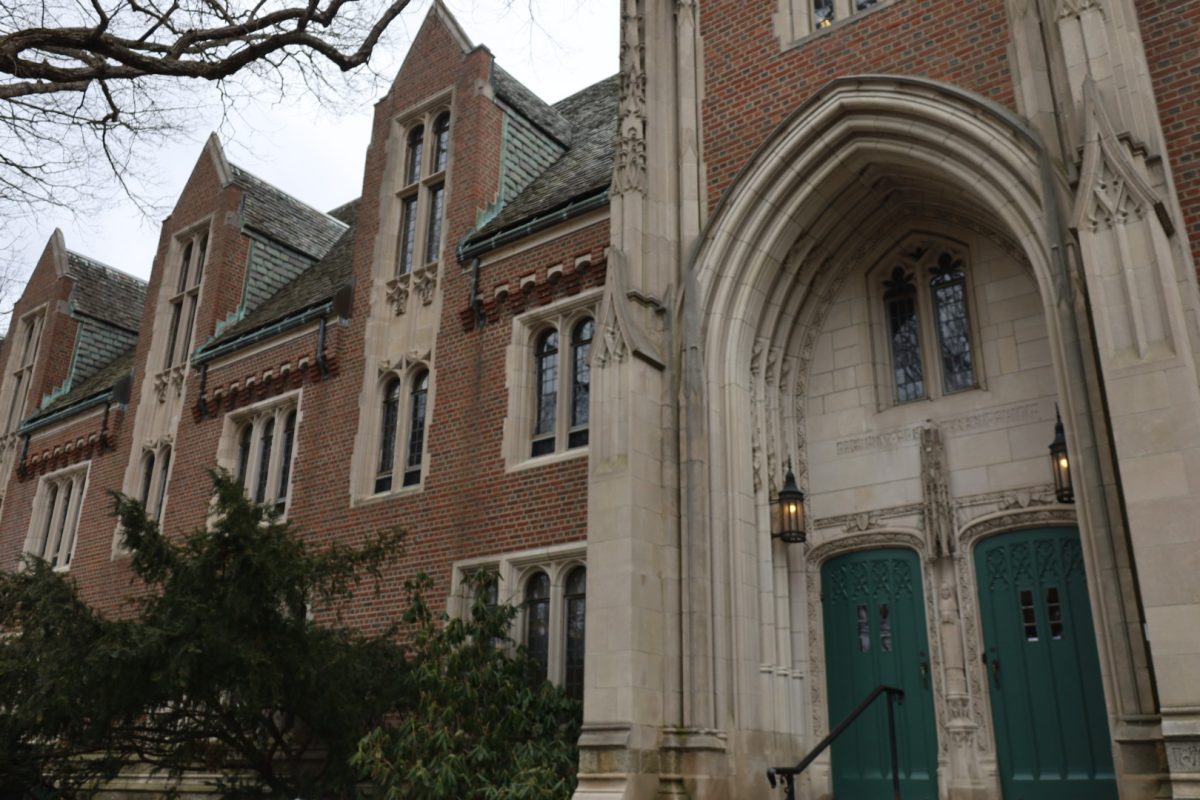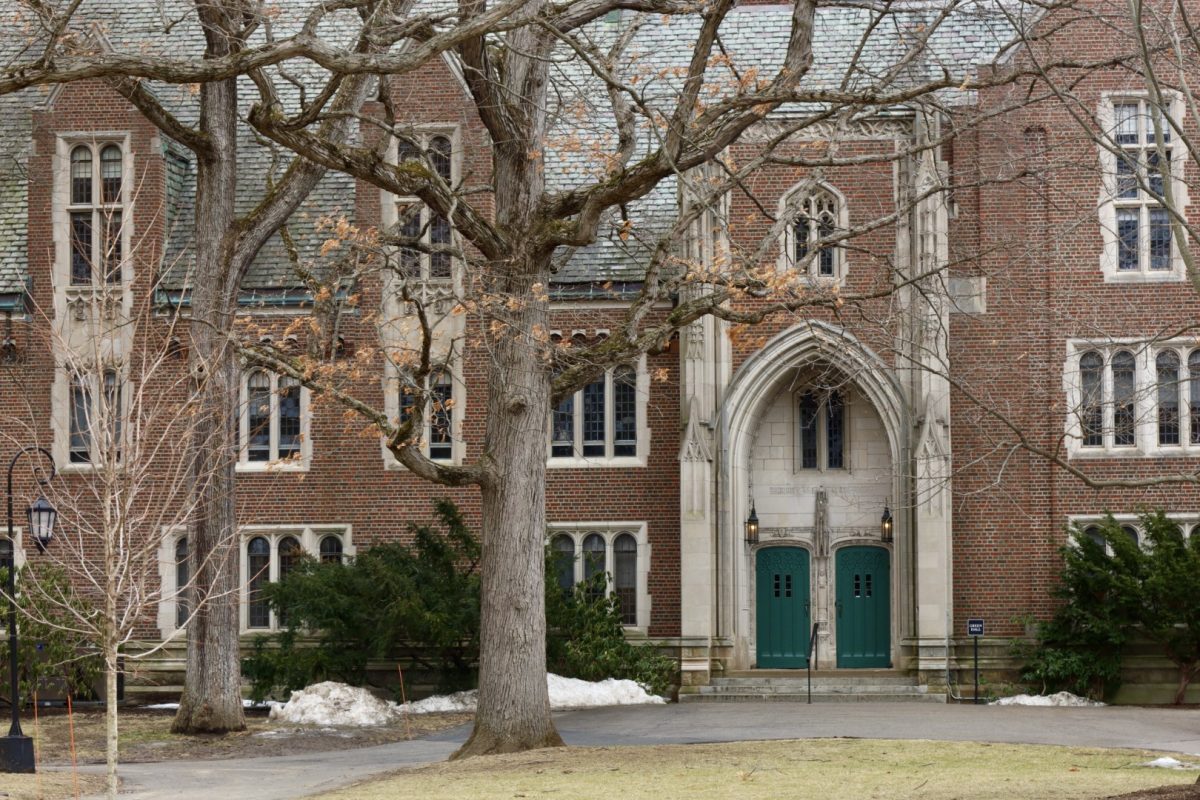In an email to the Wellesley community on Jan. 23, 2024, Dave Chakraborty, assistant vice president of Facilities Management and Planning, announced that a Freon leak had occurred around 8:30 a.m. in the pool building of the Keohane Sports Center. In an official statement to the Wellesley News, Chakraborty explained how Freon is used at Wellesley College.
“Freon is used as refrigerant … ” said Chakraborty, “At Wellesley College, R-22 Freon is still being used in a few buildings such as College Club and Weaver House. The central utility plant delivers chilled water for cooling in most buildings. There are a few stand-alone cooling units, serving areas such as common spaces in Residential Halls. All of these units were installed within the last 13 years, and do not use ozone-depleting R-22 Freon.”
Freon, an aerosol propellant, popular in the 1960s, is an organic solvent consisting of chlorofluorocarbons, or CFCs, which are nontoxic, nonflammable chemicals containing carbon, chlorine and fluorine. Historically, according to the National Oceanic and Atmospheric Administration, CFCs have been used as coolants in refrigeration and air conditioning, bug sprays, paints, hair conditioners and other health care products. CFCs, like Freon, are inert in the lower atmosphere, but when they diffuse to the upper atmosphere, they are highly reactive and release chlorine, destroying ozone and contributing to the degradation of the ozone layer, the protective blanket on our planet that reflects harmful ultraviolet radiation. Nicholas Doe, senior instructor in the chemistry department, explained further.
“It was hugely popular in the 60s for all sorts of things, until they found out that CFCs are bad for our ozone layer,” said Doe. He emphasizes that although Freon is harmful to the ozone layer, it worked very well for its intended purpose.
“It’s very rare that things that are so popular and so helpful to our life are banned due to environmental consequences,” said Doe. “What’s fascinating about it is the fact that it has been banned, so no new actual appliances can use this refrigerant. Anything that [the college] buys new, they have to make sure that it doesn’t have it. [The industry] in the United States and 197 other countries won’t even sell refrigerators that have Freon anymore.”
Chakraborty acknowledged this, and explained that Wellesley is following the phase-out initiative that the government enacted.
“R-22 or HCFC-22 Freon is an ozone-depleting substance. In 2010, the Environmental Protection Agency (EPA) launched a 10-year plan to phase out ozone-depleting substances, including R-22 Freon. Freon is no longer produced or imported, but the use of existing Freon-containing equipment is still allowed. Any newer equipment will have a different type of refrigerant. The most common alternative to R-22 is R-410A, which is a non-ozone depleting hydrofluorocarbon (HFC) refrigerant blend,” said Chakraborty.
Doe stated that Freon was used in the past because it was cheap, plentiful and worked well. The switch to HFCs, according to Doe, makes the replacement chemical seem better for the environment, although he questioned if the alternative will have unforeseen consequences.
“[The chemical coolant industry] is trying to make it sound less toxic,” said Doe, “If [Freon] is just a chlorofluorocarbon, there really is just a molecule of chloride and fluoride on it. As soon as you replace a chloride with hydrogen, maybe it makes it a little less toxic … I know there is a greener alternative, but refrigerants in general are not meant for our environment, so if it doesn’t kill the ozone layer, does it contaminate the soil? Does it do other nasty things?”
Upon further research, Doe found that HFCs will be banned in 2025, and new appliances made after that year will no longer contain that refrigerant.
“The replacement for CFCs and HFCs is “air”, “CO2” (aka-dry ice), hydrocarbons (aka-propane) and ammonia. These are less toxic, but not as cheap and efficient as CFCs and HFCs,” said Doe.
Chakraborty noted that, over the last 13 years, the College has been diligent in replacing almost all of the R-22 Freon units and explains that the few units that remain will be replaced when those buildings are renovated. He clarified that the renovation of the Keohane Sports Center had created the conditions for the leak and that normally all units are checked for leakages by facility members per a preventative maintenance schedule.
“The [AC] units in KSC were abandoned 20+ years ago and were not being used, or checked. When the KSC units were abandoned, the units were not de-commissioned properly, and Freon was left in the units. Facilities personnel were not aware that these units still contained Freon. As part of the pool renovation project, the old units were being demolished. During demolition, the Freon in these units was released,” said Chakraborty.
According to the initial alert email, the staff from Suffolk Construction, the contractors for the renovation of the Keohane Sports Center, pulled the fire alarm and called 911. The reason for this procedure is explained by Chakraborty.
“Overexposure to Freon may cause dizziness and loss of concentration. Vapors displace air and can cause asphyxiation in confined spaces. Freon, however, is a non-flammable material. Since the leak could have potentially caused imminent danger to the workers, the public safety authorities were immediately notified to assess the hazards from the release. The Fire Department ordered evacuation of the building until they could assess the risks posed by the release,” said Chakraborty, “The protocol for handling chemical spills depends on the nature of the chemical and the hazard potential. Typically, the Fire Department is notified if there is a potential of imminent danger from releases of materials that are flammable or may affect respiration, or if a person has been injured.”
Doe explained that this phenomenon relates closely to the idea of carbon monoxide poisoning.
“As an aerosol, when you breathe it in, it is taking the place of the oxygen you’re breathing in, so if you breathe in nothing but Freon, you aren’t getting any air,” said Doe.
The Wellesley Fire and Police Department arrived at the scene and stated that no injuries were reported.
Doe hypothesized that, to clean up the leak, officials and facility staff wiped up what had spilled and opened all the doors to ventilate the area, releasing the Freon to the air to prevent the chemical from poisoning any people in the vicinity.
He explained the hardships in manufacturing and using coolants such as Freon: “This is the end game anyway for everything we do environmentally, is that there is a payoff. It’s really hard to find environmentally-friendly things that do the same things as all the nasty ones,” said Doe.




